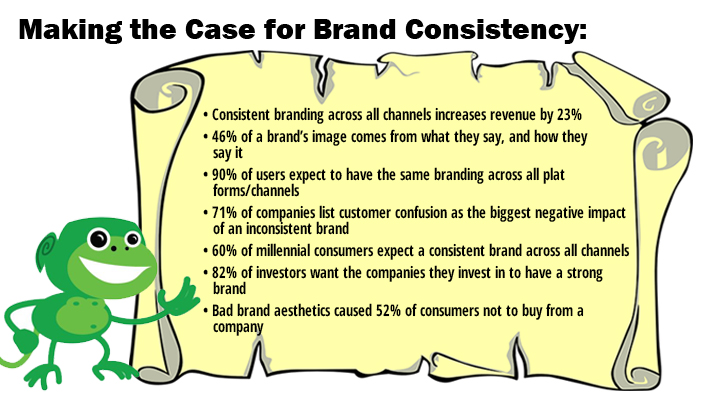In today’s marketplace, most companies appreciate a little free publicity through social media, blogs, and online articles. It’s almost an unavoidable consequence of doing business in this day and age. But with the pervasiveness of social media and the ubiquitous nature of content of all shapes, sizes, and types available online, how can a company (or even an individual) protect its brand, including core messaging and visual content?
Back in the day, for the most part, marketing team members were the only ones with the keys to a company’s brand story. They were the ones that decided what got said, when, where, and in what context. They massaged relationships with the media and with both internal and external stakeholders. They decided on logo styles and colors, font choices, and what product pictures became associated with the company’s brand or specific products. In essence, they were the gatekeepers.
Fast forward to 2019 and they’re not so much akin to gatekeepers as they are to the little Dutch boy with his finger stuck in the dike: they’re just trying to stem the incessant flow of brand chatter—some of it “official” and much of it unofficial, delivered by often well-meaning employees and self-proclaimed brand champions.
TOO MANY COOKS IN THE KITCHEN
In a recent Mediapost article, When Co-Workers Go Rogue: How to Guard Your Brand, author Chris Finneral wrote that the actions of such well-intentioned employees can “slowly erode brand consistency.”
How does this happen? It’s quite simple really. There’s an old saying that “too many cooks in the kitchen spoil the stew.” The same can be said about a company’s brand. When there are too many messengers, the message gets diluted (at best) or altered or twisted, resulting in something other than what was desired.
Members of today’s workforce have access to computers, mobile devices, smartphones, and software that puts at their fingertips all the easy-to-use and access tools needed to develop digital, visual, and written content with ease, and then share it with thousands if not millions at the push of a button.
When it becomes too easy to add another color to your company’s logo, or maybe tweak the graphic a bit to reflect a personal preference, or maybe change the tagline a bit or rework some ad or sales copy, chances are that the results won’t be 100% aligned with your desired brand look, tone, or messaging.
Companies and entrepreneurs spend too much time and resources to develop their brands and maintain them to allow this to happen. Brand consistency is critical to success. It creates top of mind awareness and recognition (they see or hear something and recognize it instantly as your brand, and they remember you). It builds awareness (consumers come to recognize your brand’s consistent visual and written content and where and when it appears). Brand consistency also builds trust with consumers (they know you and what to expect from your messaging).
When employees at any level—from the CEO to front line staff—begin creating their own content, visual media, etc., it can spell disaster. It’s long been proven that consumers prefer brands that remain consistent over time. In other words, if it ain’t broke, don’t fix it . . . and don’t let others (again, whether well-intentioned or not) break it either.
MAINTAINING CONSISTENCY
The answer to brand consistency is to develop brand guidelines if you don’t already have them, update them to make sure they reflect today’s realities (social media, etc.) if you do, and then, of course, to enforce them. And before you roll your eyes, thinking, “I’ve heard this a thousand times from my marketing team,” there’s a reason for that. Numerous studies show that consistent branding increases revenue by some 23 percent and the only way to ensure consistency is to develop guidelines and adhere to them.
Brand guidelines include everything from everything from your company’s mission, vision and core values; to the tone of your messaging; to acceptable (and unacceptable) social media examples and channels; to the exact RGB or hex codes of your brand colors; to the proper font face, size, and weight; to acceptable forms of your logo graphics (such as size, format, and acceptable placements); to presentations (such as typography and images for PowerPoint).
Perhaps two of the most important areas for companies to look at are social media posting policies and company presentations:
- The social media policy should cover both the company’s “official” social media posting as well as posts made by employees. It should govern what social media channels your brand will be using (which are acceptable, and which aren’t), as well as how employees use social media, both on the job and at home (at least as it pertains to your brand). For example, if they do post visual and written content related to your brand, they should do so consistently with your company’s brand guidelines. Another approach could be to require employees refrain from posting about your brand at all on social media. What’s right for one company will likely differ from what’s right for another.
- In the area of company presentations, depending on the size of your organization, it’s a given that numbers of employees could at any one time be presenting on behalf of the company, such as a sales presentation or training. Here, too, consistency is key. Presentations, just like any other type of digital, written, or visual content should adhere to brand guidelines—including typography, colors, logos and graphics, and overall messaging.

GETTING BUY IN
It’s one thing to tell people brand consistency is important, it’s quite another to show them. Luckily, we have a wealth of statistics we can draw on to make the case. If you meet resistance from a team, department, or even an individual, use these data points to support your argument for brand consistency:
- Consistent branding across all channels increases revenue by 23%
- 46% of a brand’s image comes from what they say, and how they say it
- 90% of users expect to have the same branding across all platforms/channels
- 71% of companies list customer confusion as the biggest negative impact of an inconsistent brand
- 60% of millennial consumers expect a consistent brand across all channels
- 82% of investors want the companies they invest in to have a strong brand
- Bad brand aesthetics caused 52% of consumers not to buy from a company
With statistics like that, it’s hard to argue against the importance of brand guidelines—but brand guidelines are only good if they are kept up-to-date and enforced.
How you choose to enforce them is likely a discussion to have with management and HR, and something that shouldn’t be taken lightly.
Whether it’s the shape and size of your logo, the typography of a web page or PowerPoint presentation, or the content on a one-pager being used by sales, all of it is important.
With 95% of companies having formal brand guidelines, but only 25% actually sticking to them, this is clearly an area that’s ripe for improvement. Some might even call it low hanging fruit.
Top 10 Brands That Failed
As the brand ambassador for your organization, what can you do to make the communication of your brand more consistent? Share your answers here.
WE’RE HERE TO HELP
Do you need help creating or updating brand guidelines for your company? Do you need guidance regarding social media posting, platforms, and policies? Barrel O’Monkeyz is here to help you develop and communicate your brand story to the world. Contact us today to explore how we can help.

